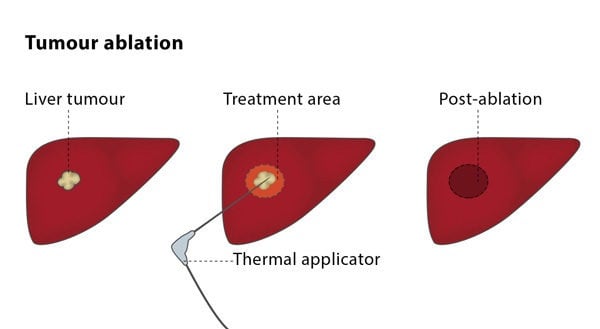What is percutaneous tumour ablation?
Percutaneous tumour ablation refers to a range of techniques which destroy tumour tissue via needles placed through the skin. The vast majority of techniques destroy tumours by the use different types of needles that are placed in or around the tumour. The most commonly used techniques apply heat (e.g. radiofrequency ablation or microwave ablation) and there are others that use cold (cryoablation). High-intensity focuses ultrasound (HIFU) does not require the placement of needles, as the thermal energy is applied via bundled ultrasound energy.
There are also non-thermal techniques that use different types of electric current, electric plasma (Coblation) or chemical agents. Irreversible electroporation uses high voltage electric shocks to pierce the cell membranes and cause cell death. Electrochemotherapy uses the same approach to open the cell membrane for chemotherapeutic agents.
Each of these techniques has its specific advantages and disadvantages and there is no technique that suites all types of treatments equally well.
How does the procedure work?
The procedure will be carried out using image guidance, such as ultrasound, CT or MRI, to control the insertion of the devices and the energy deposition. You will be will be anesthetized for the procedure. For most ablation procedures, the interventional radiologist will insert one or more needles or applicators into your tumour to destroy the tumour while preserving the surrounding healthy tissue.

